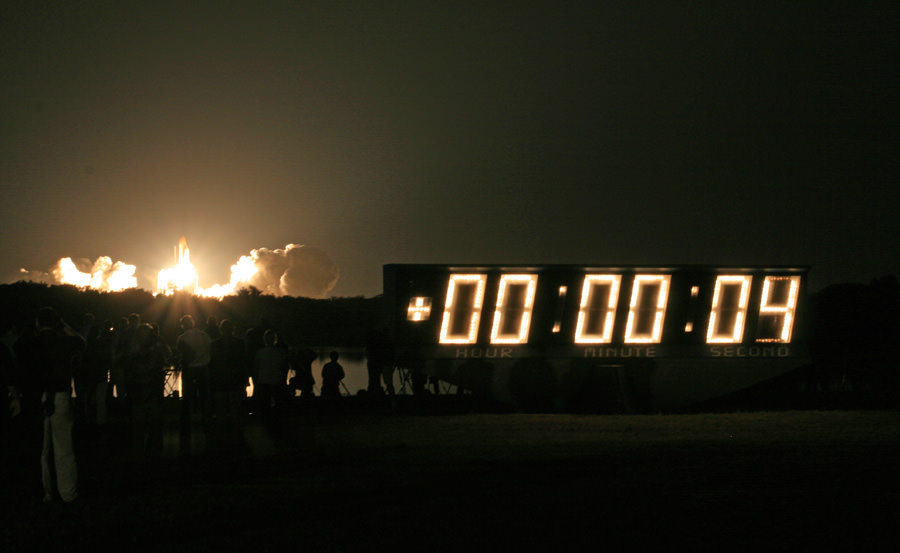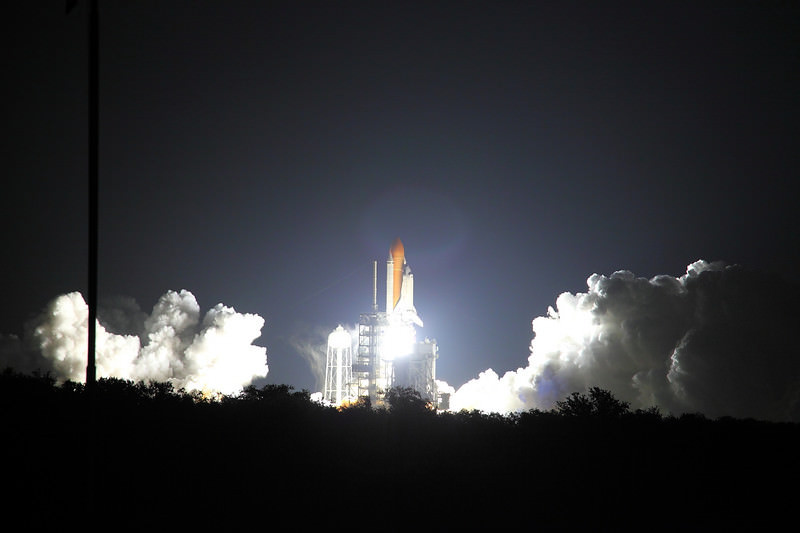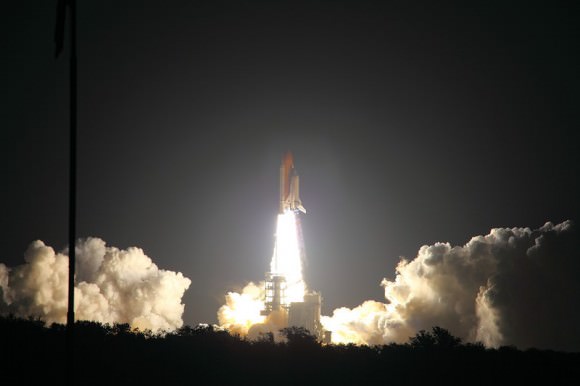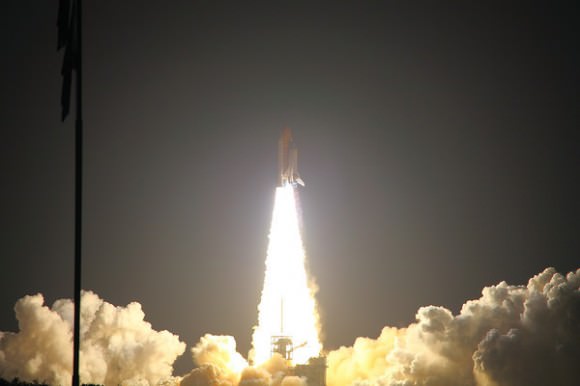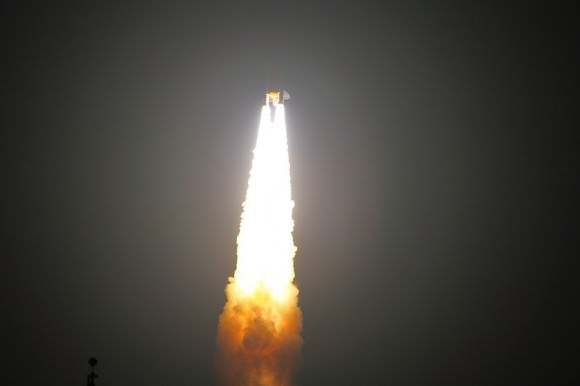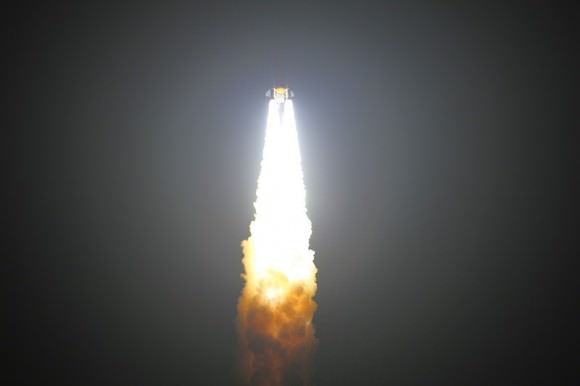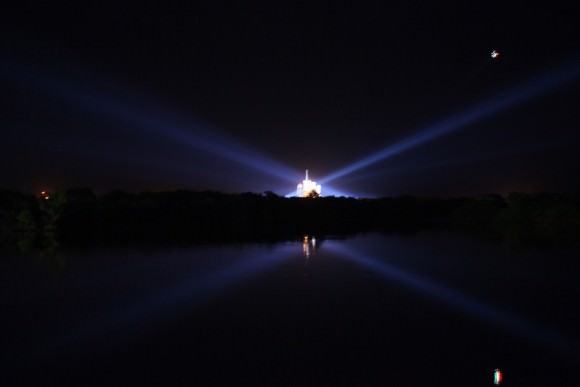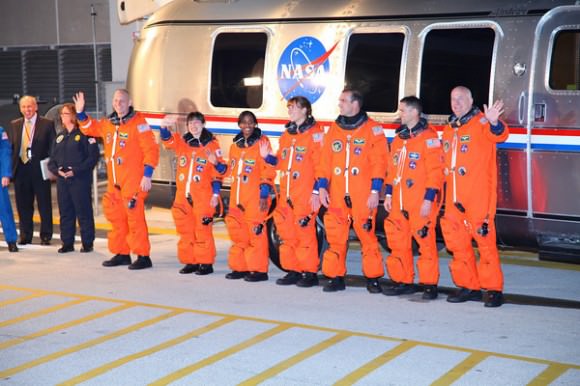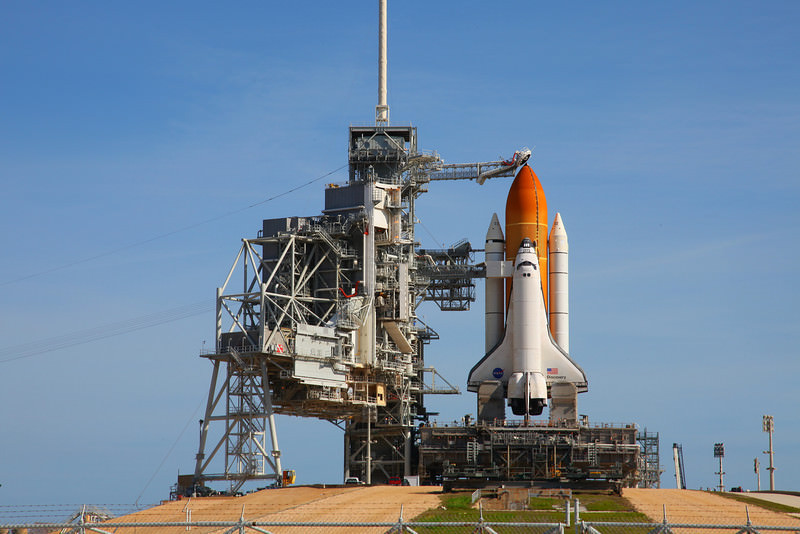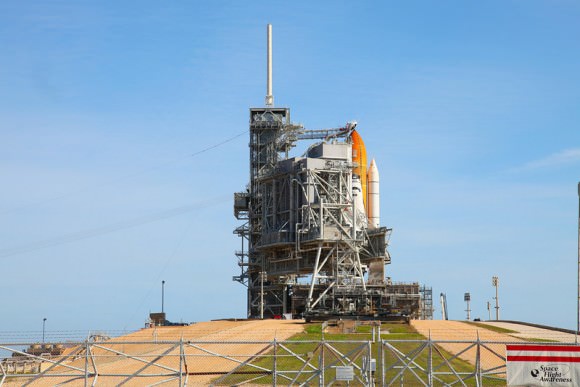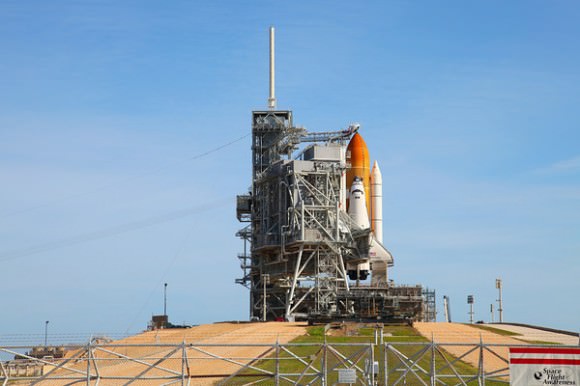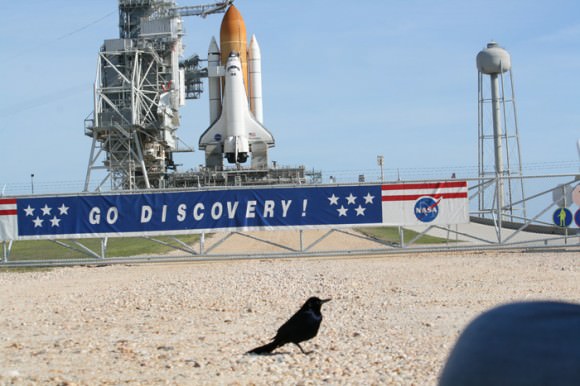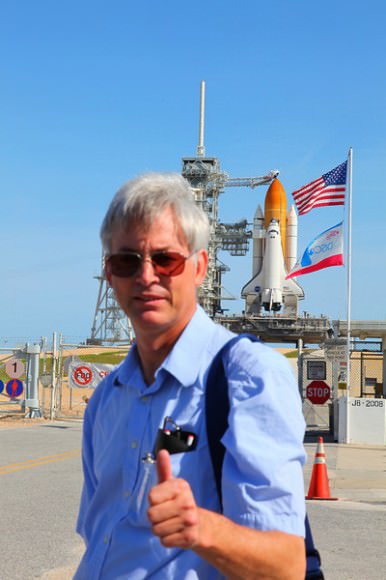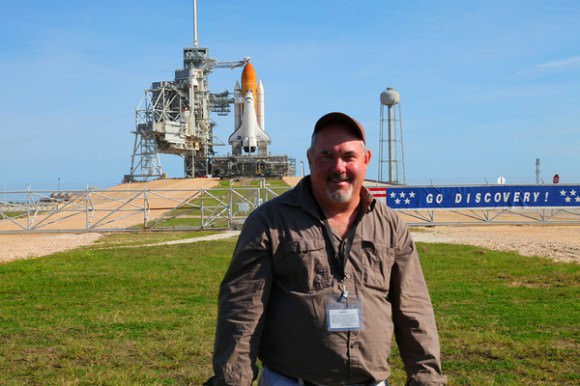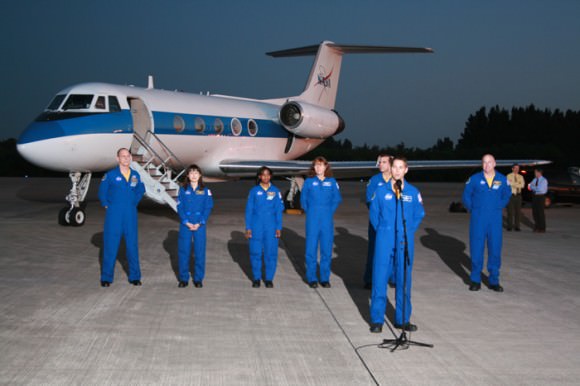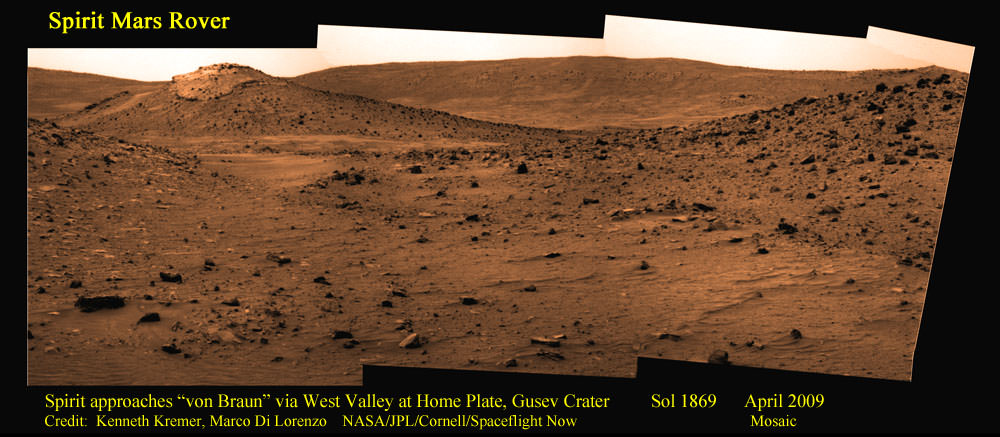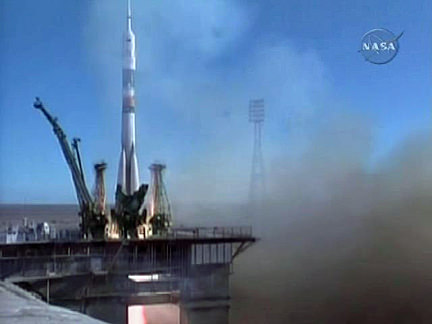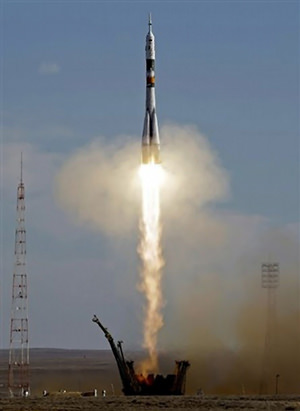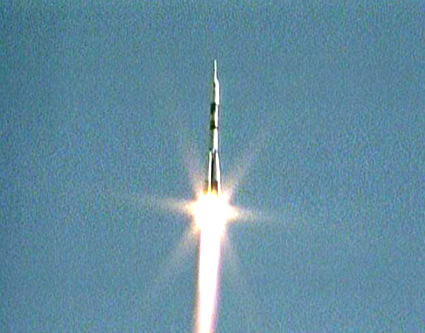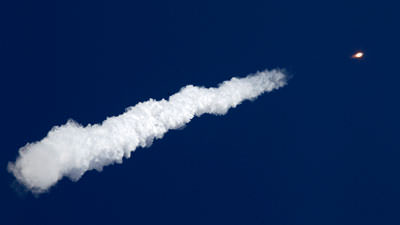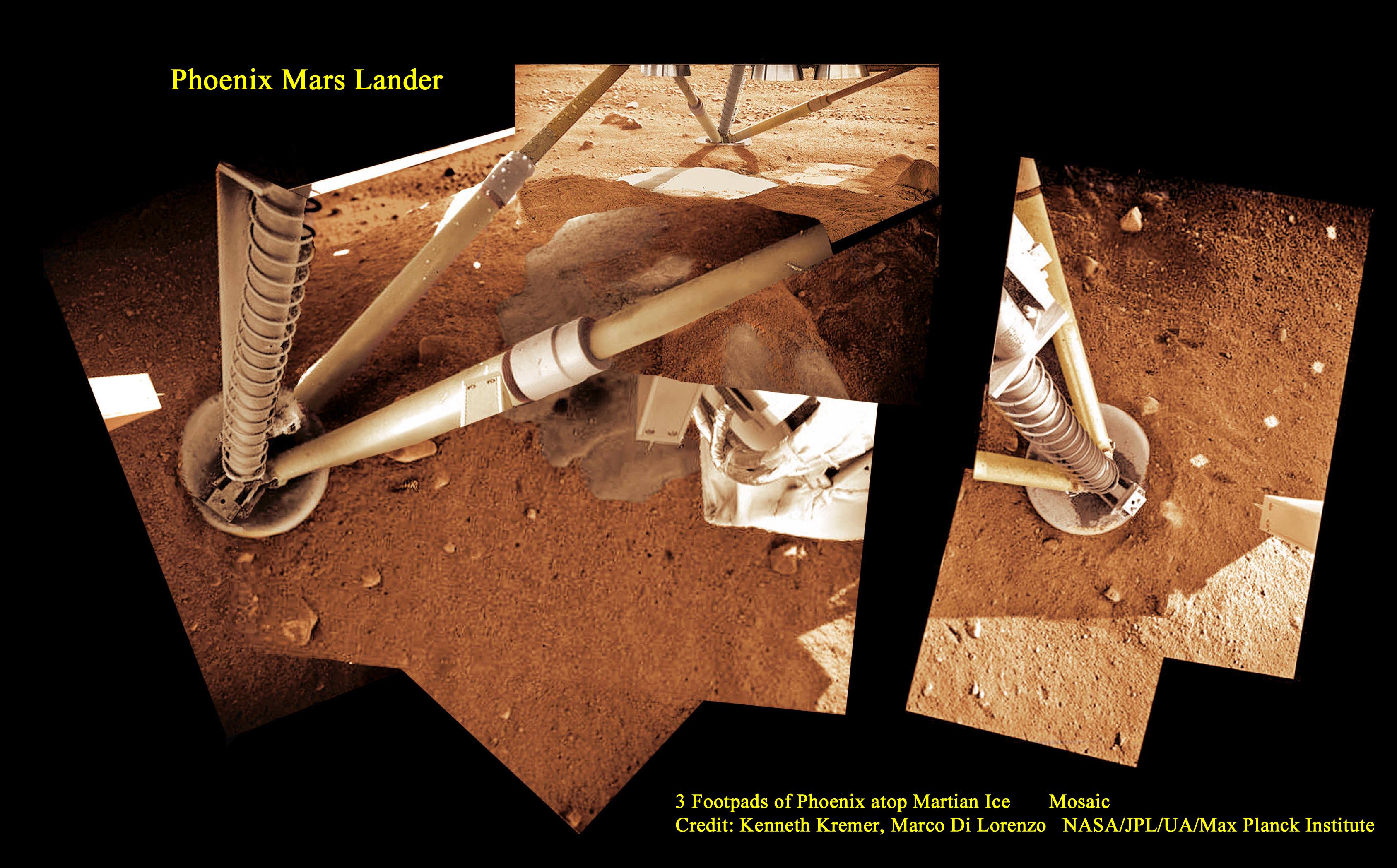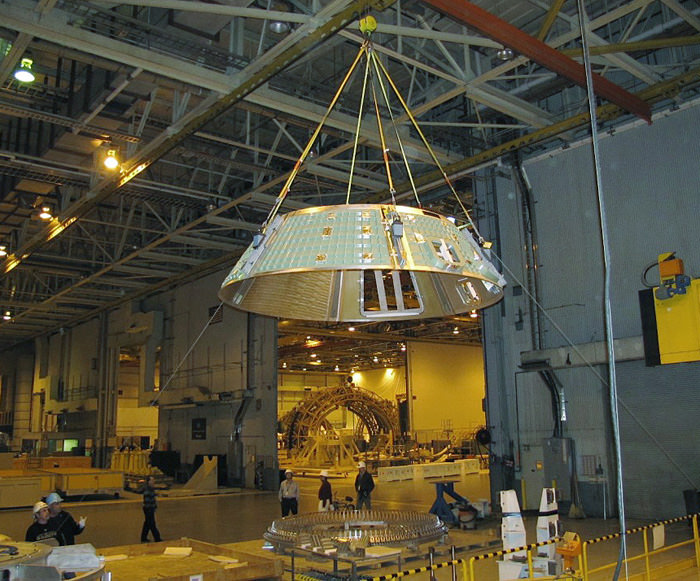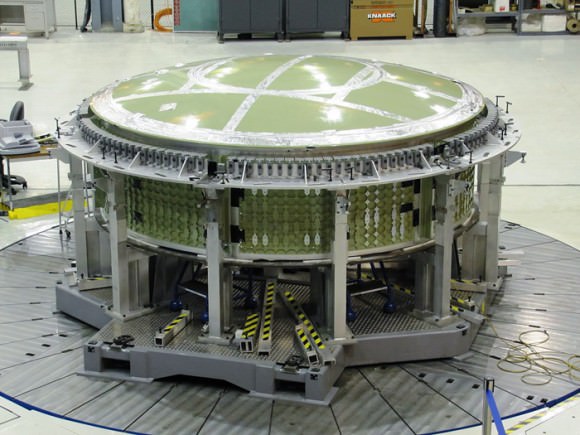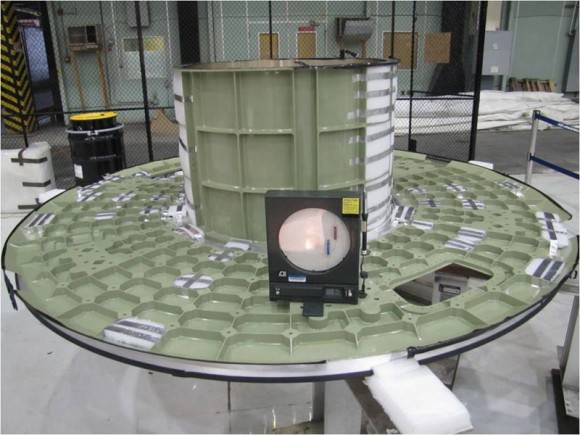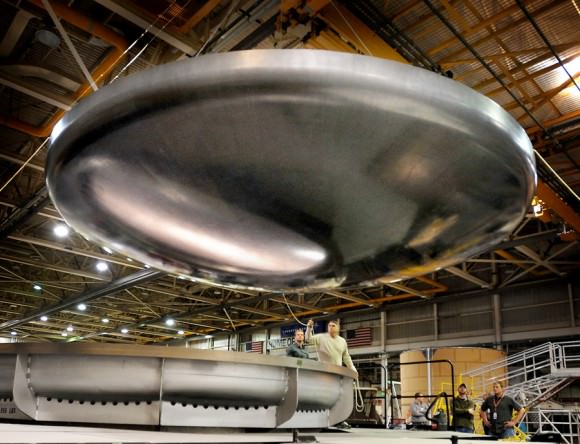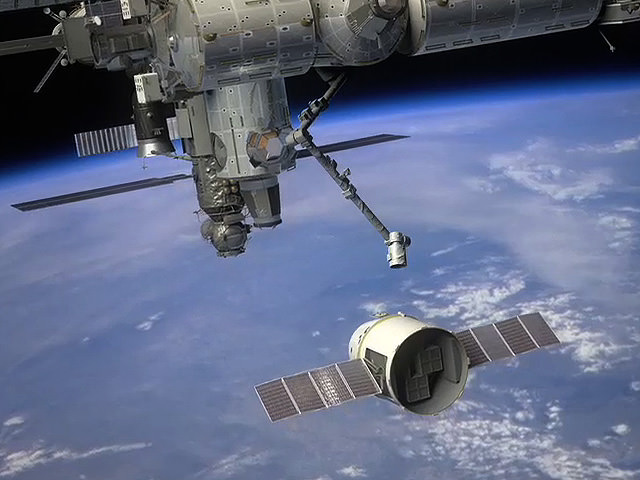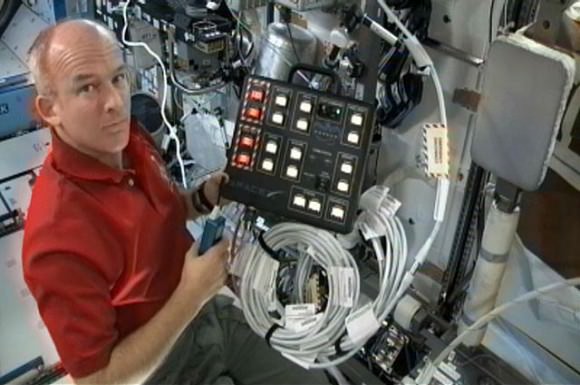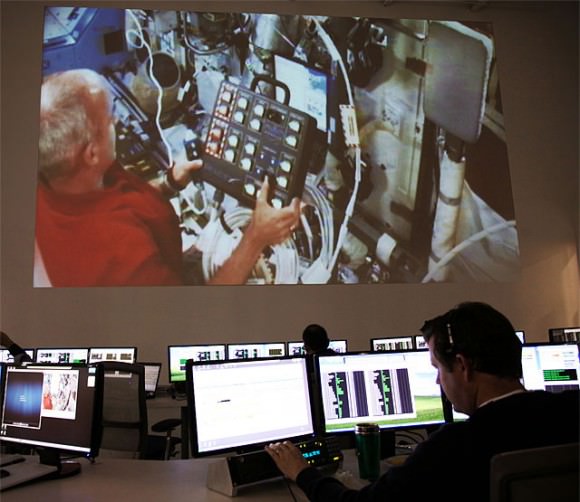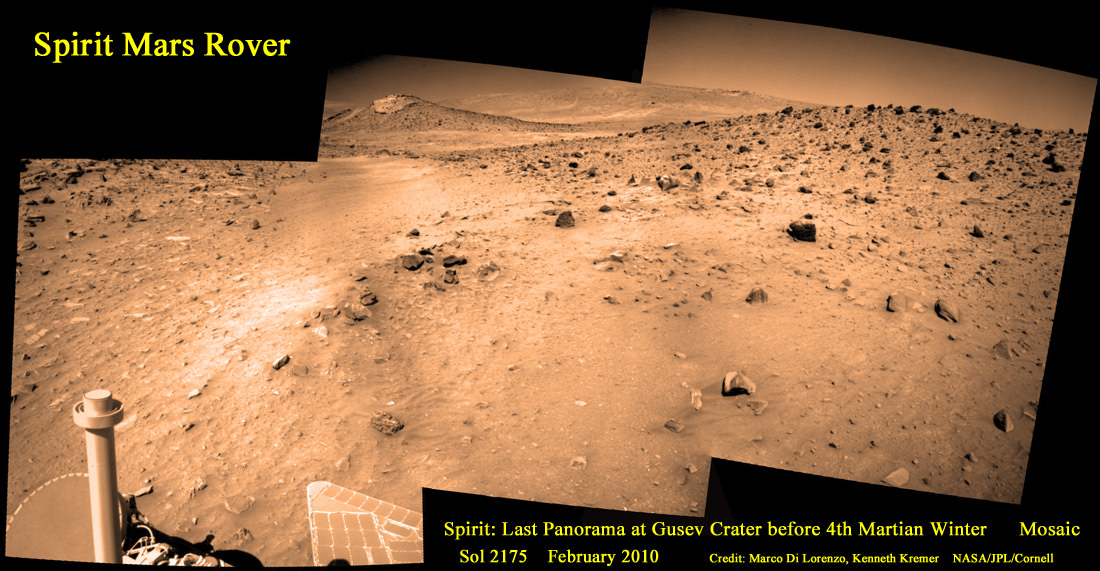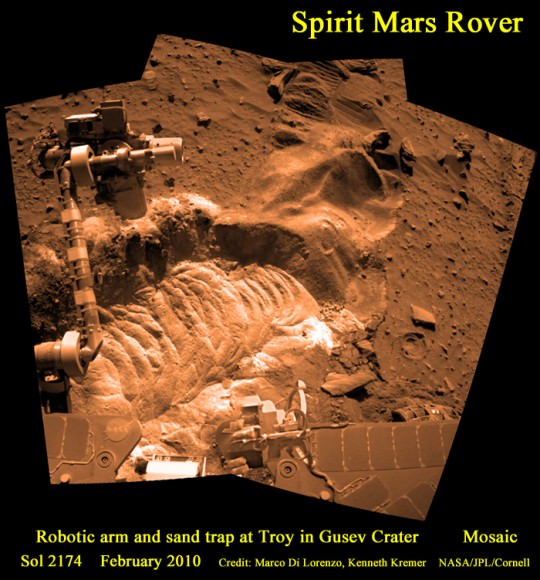[/caption]
(Editor’s Note: Ken Kremer is at the Kennedy Space Center for Universe Today covering the flight of Discovery)
Following their spectacular predawn blastoff on Monday April 5, the crew of seven astronauts aboard Space Shuttle Discovery is busy with many important chores in preparing for their scheduled link up with the International Space Station on Wednesday (April 7).
Today the astronauts completed the crucial inspection of the orbiters heat shield but cannot beam the video views back to analysts waiting in Houston because of a communications glitch.
Shortly after achieving orbit, the crew discovered a significant malfunction with the orbiters Ku-Band Antenna which the crew uses to transmit and receive information at high speed back and forth with the ground through the orbiting Tracking and Data Relay Satellite (TDRSS) system.
The dish shaped antenna failed to complete its standard activation sequence. Troubleshooting and power cycling efforts by the astronauts and engineers on the ground have been unsuccessful thus far in resolving the problem.
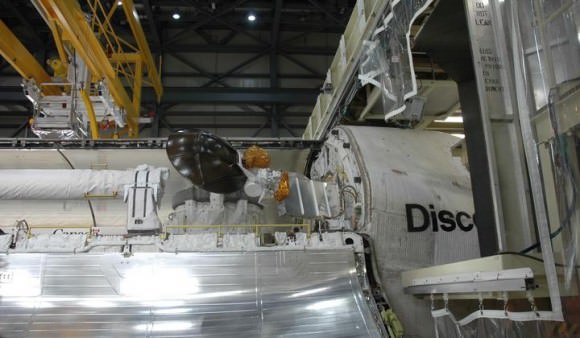
The antenna is used for high data rate communications with the ground such as transmission of voice and video data and files including television. The shuttle’s radar system also uses the dish antenna during rendezvous operations with the station.
Loss of the antenna is not expected to affect the objectives or safety of the 13 day flight of STS 131. Discovery can safely rendezvous and dock with the ISS using several alternate communications systems – such as the S-band and UHF – and back up capabilities for the radar, all of which are functioning normally. The ISS is also equipped with a Ku-Band antenna that can transmit video of the docking including the belly flop on final approach.
NASA Kennedy Space Center spokesman Allard Beutel told me that, “We’re going to pretty much work with the idea that we will not get the Ku antenna back for this mission so teams are working plans accordingly.”
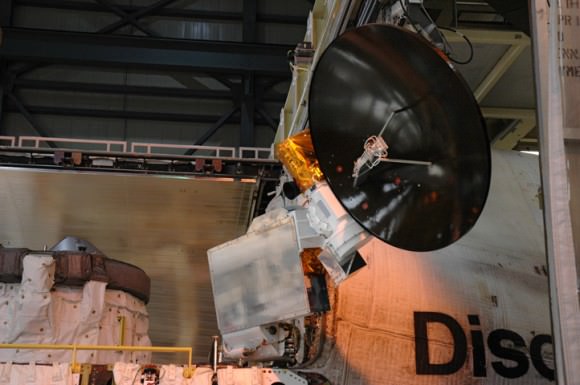
Today (April 6), the astronauts completed the now standard inspection of Discovery’s heat shield with the Orbiter Boom Sensing System (OBSS) on the shuttles robotic arm to carefully scrutinize the thermal protection system for any signs of damage. This critical task is essential to confirm the complete integrity of the heat shield which protects the orbiter and human crew from the scorching heat generated during re-entry through the Earth’s atmosphere and ensures a safe landing back at KSC at the conclusion of the flight.
Normally, the video of the heat shield inspection data is quickly beamed back to the ground via the Ku-Band antenna for a rapid analysis by imagery experts at Mission Control in Houston. Due to the malfunctioning antenna, the crew recorded the data on five or six 40-minute tapes that will be down linked after docking on Wednesday, using the stations Ku-Band system. The Damage Assessment Team review will be delayed, but this issue will not affect the quality of data it reviews.
According to Flight Director Richard Jones the detailed examination of Discovery’s heat shield and nose cap went well and a preliminary review found no problems or areas for concern.
Docking to the ISS is set for Wednesday, April 7 at 3:44 AM
Earlier STS 131 articles by Ken Kremer:
Discovery Dazzles with Two Dawns in One Day

